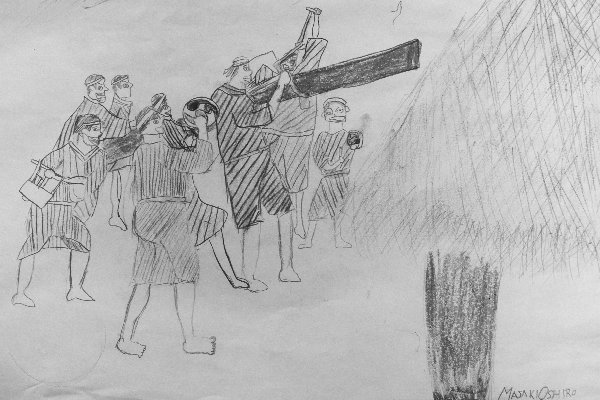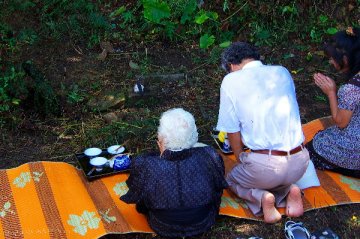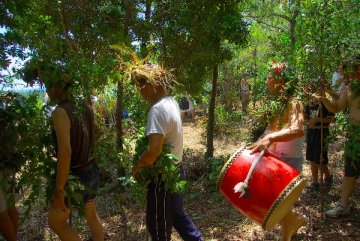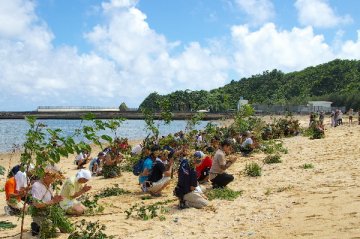
Sketch above: Masaki Oshiro, All photos: Ryukyu Mike
Imagine, if you can, a festival with no cotton candy, fireworks, rock ‘n’ roll bands, food tents, or people hawking overpriced trinkets. A festival where you can’t spend a dime; there’s nothing for sale. That’s the Shinugu Matsuri.






